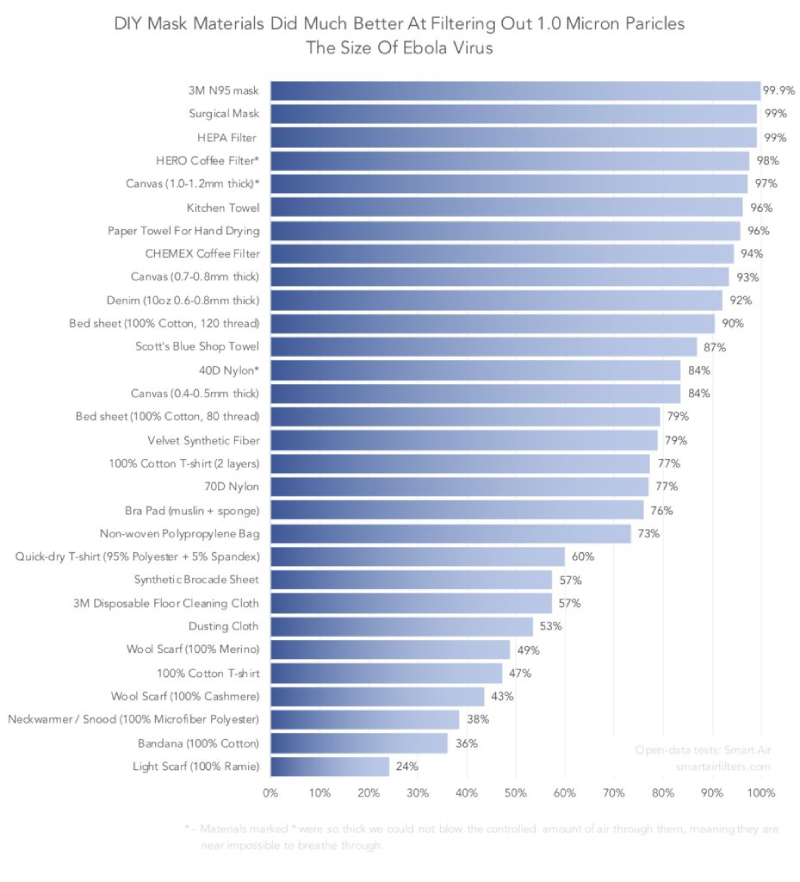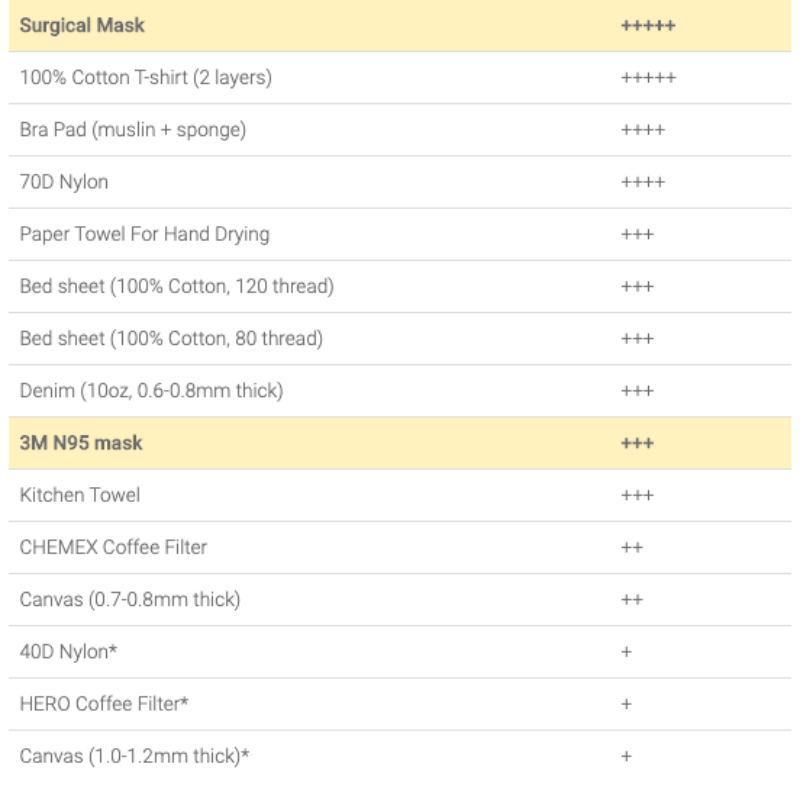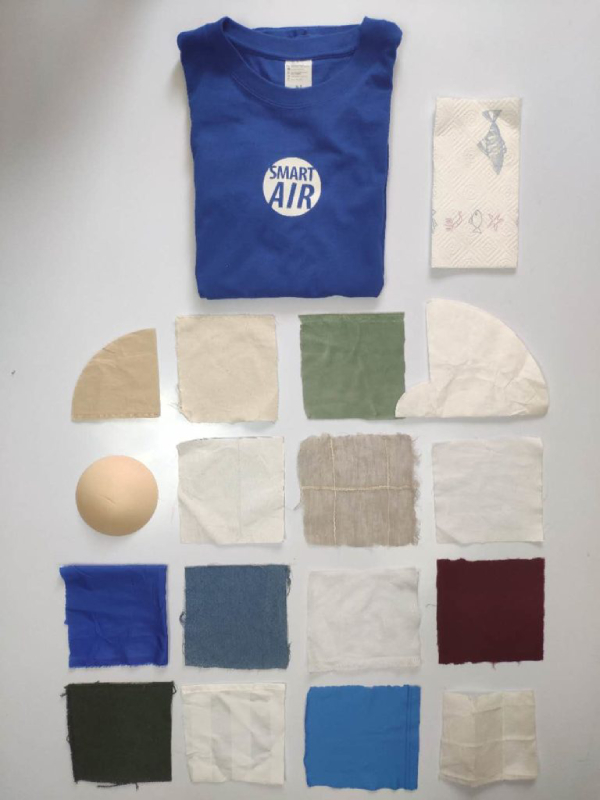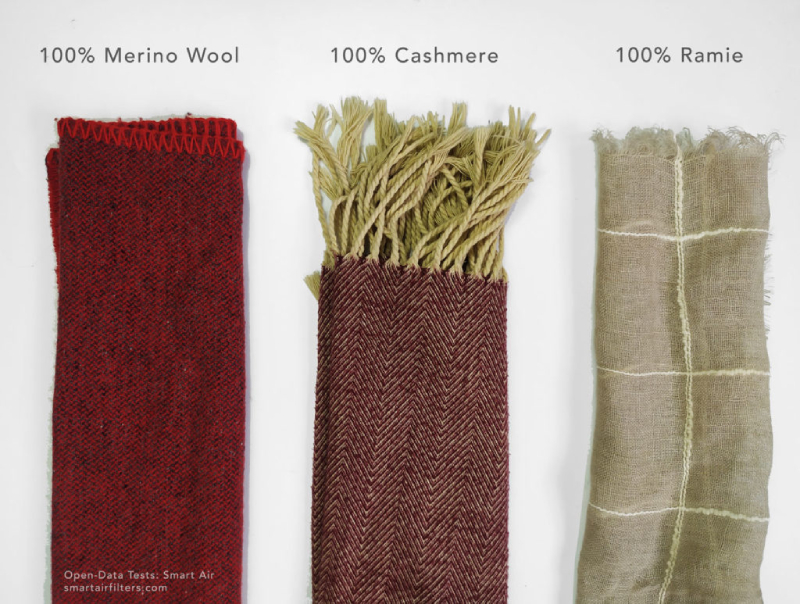With masks on limited supply since the coronavirus outbreak, people have come up with creative ways to make their own. Some include using kitchen towels, scarves and even bras!
But which mask material is the most effective in protecting yourself against the virus?
Smart Air, a social enterprise based in Asia that promotes cost-effective air filters as a solution to indoor air pollution, recently conducted a study on DIY masks materials.
In the study, over 30 different materials were tested for their effectiveness in filtering virus-sized particles, as well as their breathability. Some materials tested were bra pads, coffee filters, bedsheets, denim and scarves.
Choosing The Best Materials For DIY Masks
Filtration test
Smart Air mimicked the test setup used by Cambridge University researchers, in which a fan blows air and particles through the mask material.
On the other side of the mask material, a Met One GT-521 laser particle counter then measures the number of particles that passes through the material.

Image: Smart Air
According to the research, coronavirus particles are about 0.06 to 0.14 microns in size and five to 10 microns in droplet form.
The study tested filtration for small- and large-sized particles at 0.3 microns and one micron respectively, to compare the numbers.
Results
The results showed that paper towels, thick canvas, denim and bedsheets are more successful in capturing a higher percentage of small- and large-sized particles.
On the other hand, scarves and bandanas have almost no effect for small-sized particles and a lower percentage of capturing large-sized particles.
Image: Smart Air

Image: Smart Air
Breathability test
What about breathability? It won’t do if a mask is impermeable to virus particles but one can’t breathe through it. So it is important to have a good balance between breathability and filtration for practical use.

Image: Smart Air
Not surprisingly, materials such as kitchen towels, coffee filters and thick canvases that were more effective in filtering particles were found to be the hardest to breath through.
In comparison, paper towels, bedsheets and denim materials had the breathability of between a surgical mask and N95 mask.
Summary of effectiveness: Filtration and breathability
If you’re looking for homemade materials to create your own mask, denim and bedsheets may be what you’d want to reach for. Here is a list of the most and least effective materials.
Most effective:
- Denim (10oz)
- Bed sheets (80-120 thread count)
- Paper towels
- Canvas (0.4-0.5mm thick)
- Shop towels

Image: Smart Air
The 0.4 to 0.5mm thick canvas material had a better breathability rating than a surgical mask, while being able to filter particles well. Interestingly, the bra pads performed well in filtering small- and large-sized particles.
The study also found that generally, natural materials (100 per cent cotton) are better than synthetic ones (polyester) in filtering out particles. This is due to their rougher and irregular texture, which makes them better suited to capture tiny particles.
Least effective:

Image: Smart Air
While materials like coffee filters fared well at filtering tiny particles, it is difficult to breathe through if used as a face mask. Three scarves made of merino wool, cashmere and lightweight ramie were tested and all scored low on the ability to filter tiny particles.
Conclusion
So for now, it is safe to say that using paper towels, bed sheets or even bras are a much better option than using scarves to make your own masks.
Still don’t quite believe it? Check out what this Japanese professor has to say about whether a surgical mask, paper towel mask or cloth mask is most effective against COVID-19.
This post was first published on AsiaOne and was republished on theAsianparent with permission.
ALSO READ: #CanOrNot?: Can You Get Coronavirus From Smelling an Infected Person’s Fart?






